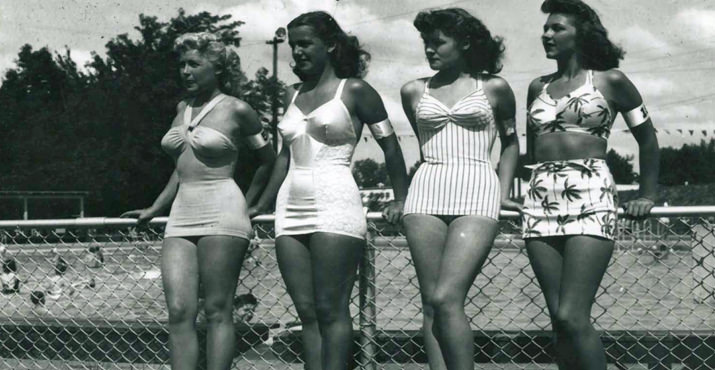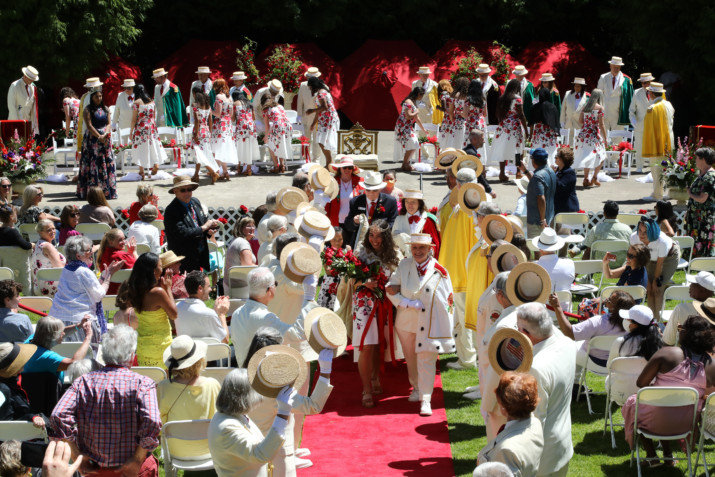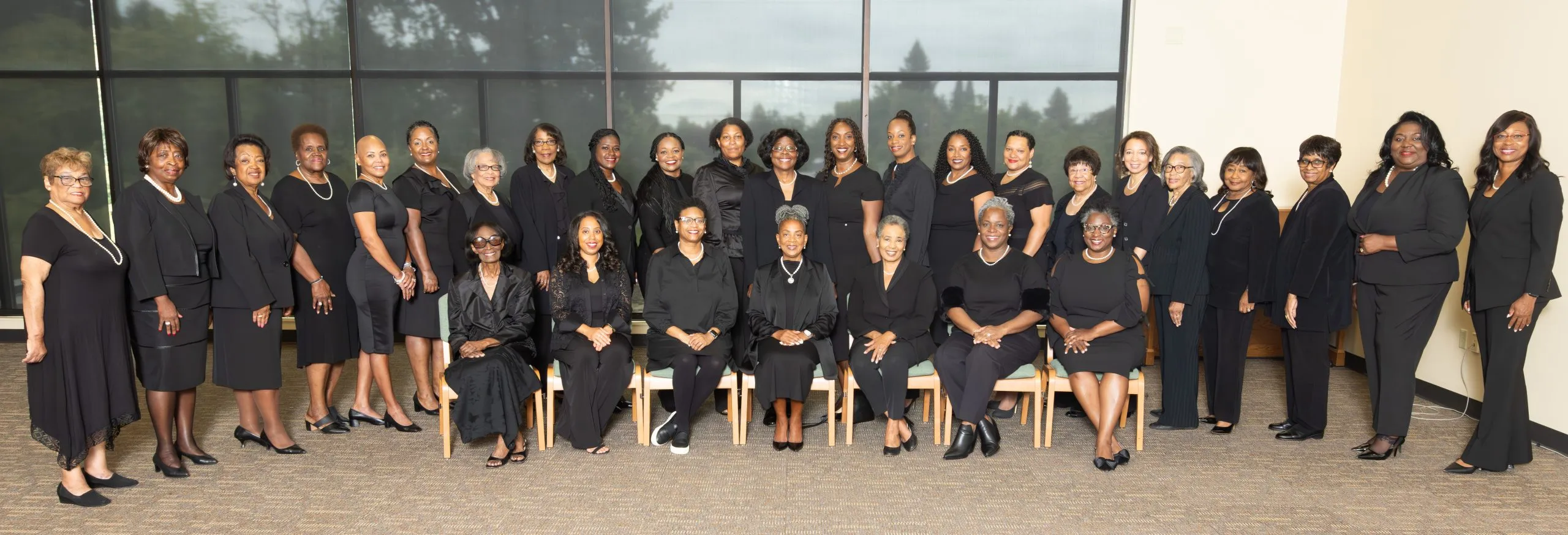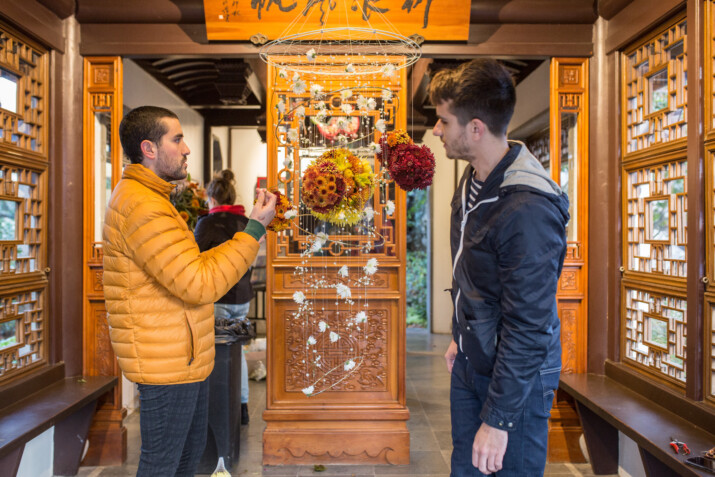Here’s a photo to put you into the mood for Memorial Day weekend, it’s from a 1950’s beauty contest at Jantzen Beach. The photo, from our friends at the Oregon Historical Society, shows contestants Anne Lustavka, Kathleen Kinder, Jane Hoberg and Gloria Albertson. It’s typical of events held during the heyday of Jantzen Beach, on Hayden Island, when the location was an amusement park and and tourist destination (before it was the site of a shopping mall).
The Jantzen Beach of that era was named for one of the parks investors, Carl Jantzen of Jantzen swimsuit fame. On opening day, Saturday May 26, 1928, 15,000 people paid the 10-cent admission. The amusement park included a merry-go-round, fun house, Big Dipper roller coaster, Golden Canopy Ballroom, and four swimming pools. The park’s popularity peaked during the 1940s. Jantzen Beach park closed on Labor Day, 1970. The C.W. Parker Carousel is now at the Jantzen Beach SuperCenter.

The Jantzen swimsuit company actively promoted the physicality of swimming, and from the early 20s began using the tagline ‘The Suit That Changed Bathing to Swimming’, complete with the Red Diving Girl logo.
Just a note about Jantzen Swimwear:
In 1910, Portland Knitting Company began in downtown Portland with a few hand-knitting machines above a tiny retail store. Little did founders Carl Jantzen, Roy and John Zehntbauer know that they would achieve both fame and controversy as swimwear pioneers. Producing a wool suit for a rowing team they began offering “bathing suits” in their catalog. Knit on sweater cuff machines, the suits became popular with swimmers. The demand increased for those “Jantzens” and the company name was changed in 1918 to Jantzen Knitting Mills. The suits were made of 100% pure virgin wool. Matching stockings and stocking cap completed the costume of the day. After seventy years of successful opperation, In 1980, Jantzen was purchased by Blue Bell, and Blue Bell was acquired by Vanity Fair Corporation in 1986. In 2002, the Jantzen trademark was purchased by Perry Ellis International, Inc. This included the licenses of Nike and Jag Swimwear.
You can explore the amazing history of our beautiful state at the Oregon Historical Society in downtown Portland at 1200 SW Park Avenue. OHS has more than 2.5 million photographs in its collection! We’re excited to collaborate with OHS to bring some of those wonderful photos to you.
From the Oregon Historical Society:
As the steward of Oregon’s history, the Oregon Historical Society educates, informs, and engages the public through collecting, preserving, and interpreting the past . . . in other words, Oregon history matters.
















